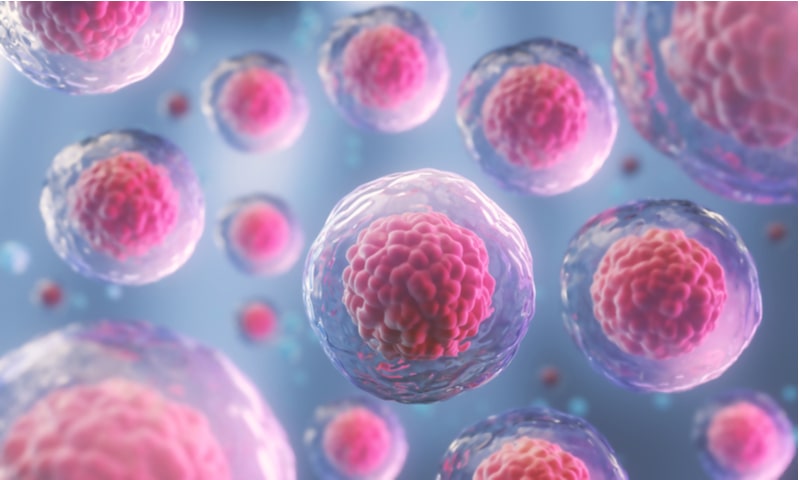Why Is There Controversy Around Using Stem Cells?
4 Minute Read:
Stem cells are the biological building blocks that create all the parts of our bodies. There are several different types of stem cells, including embryonic stem cells (found in the earliest stages of development), tissue-specific/ adult stem cells (first appear during the fetal stage but are carried with us throughout life), and amniotic stem cells (found in the placenta and umbilical cord).
All stem cells duplicate themselves and then develop into more specific organ or tissue-related cells. Other than these similarities, stem cells are diverse and have unique abilities.
Over the years, the use of stem cells in the medical profession has sparked some controversy. However, much of this controversy is based on incorrect assumptions about the origin of medical stem cells.
What Is the Difference Between Embryonic, Amniotic, and Adult Stem Cells?
Researchers have investigated every type of stem cell. Each of the following kinds of stem cells has its own special characteristics.
Embryonic Stem Cells
Embryonic stem cells come from blastocysts, a mostly hollow sphere of cells that develop in humans three to five days after an ovum (female egg cell) is fertilized by a single sperm.
Embryonic stem cells are pluripotent, which means they can generate every cell type except those of the placenta and umbilical cord.
While many people believe that embryonic stem cells come from aborted fetuses, the truth is they are typically derived from blastocysts created by in vitro fertilization (IVF) techniques and come from embryos that were never implanted and are no longer needed.
This knowledge may not make those who oppose the use of embryonic stem cells feel much better, but the good news is that most of the time when you hear the term “stem cells” being used in relation to a medical procedure, they are almost always adult, or tissue-specific stem cells.
Tissue-Specific (Adult) Stem Cells
Some tissues and organs contain tissue-specific stem cells designed to replace cells in that tissue that are lost to age or injury.
While embryonic stem cells are fundamental and pluripotent, tissue-specific stem cells, also referred to as adult stem cells, are specialized and can generate different cell types for the specific organ or tissue in which they are needed.
For instance, stem cells that come from bone marrow can generate red blood cells, white blood cells, and platelets. However, they can not be used to generate skin, liver, lung, or brain cells.
When you hear about regenerative medicine, these are most often the types of stem cells used.
Amniotic Stem Cells
Amniotic fluid surrounds a fetus during pregnancy and is most often discarded after birth. However, some mothers of babies delivered through cesarean section often donate this fluid for medical use and research.
Amniotic fluid contains an abundance of fundamental cells that include stem cells, cytokines, proteins, and many other essential compounds.
Clinical studies have clearly illustrated the regenerative and inflammation-reducing properties this fluid contains. It may also help reduce the visibility of scars and is highly valuable in the field of plastic surgery.
Other Experimental Stem Cells
Mesenchymal Stem Cells
Mesenchymal stem cells or MSC refer to cells extracted from stroma, the connective tissue that surrounds organs and tissues.
More accurately named “stromal cells” by some scientists, they still don’t fully comprehend the types of cells they are capable of generating and whether these cells are even true stem cells.
They are in agreement about the fact that MSC characteristics rely on the part of the body they come from and the way they are best duplicated.
Induced Pluripotent Stem Cells
Induced pluripotent stem (iPS) cells are those that have been engineered by a lab. This achievement is accomplished by converting tissue-specific cells into those that act like embryonic stem cells.
While iPS cells can be very similar to embryonic stem cells, they aren’t the same. Scientists are still exploring what these differences are and what exactly they mean.
Stem Cells in Plastic Surgery
Dr. Renato Calabria is a board-certified plastic surgeon voted as one of ‘America’s Top Plastic Surgeons’ by Consumers Research Council of America and was nominated as ‘Physician of the Year’ by the NRCC Physician Advisory Board.
He and his team are experienced in using a patient’s stem cells obtained directly from their own body fat.
“I strongly believe that using could aid not only in plastic surgery procedures such breast reconstruction, facial deformities caused by an injury or congenital defects and burns but also in the cosmetic surgery field in procedures like face lift and facial rejuvenation, breast augmentation, body and buttock augmentation, and reshaping and hand rejuvenation.”
- Dr. Renato Calabria
Call Dr. Calabria’s Beverly Hills Plastic Surgery Practice to Learn More!
Dr. Calabria believes that the emergence of stem cell use in plastic surgery is the start of a new era. He is committed to staying on top of all the advancements made in the study of stem cells’ regenerative properties.
Some of his stem cell procedures include:
- Facelifts with stem cells
- Breast implants with stem cells
- Hand rejuvenation with stem cells
- Body contouring with stem cells
He and his patients have seen firsthand the benefits of regenerative medicine in plastic surgery, not only at the tissue level but at the cellular level as well.
Beverly Hills plastic surgeon, Dr. Renato Calabria, is now accepting new patients who want to improve their appearance by using the most advanced techniques available today.
Dr. Calabria also has an office in Rancho Mirage for your cosmetic surgery needs.

